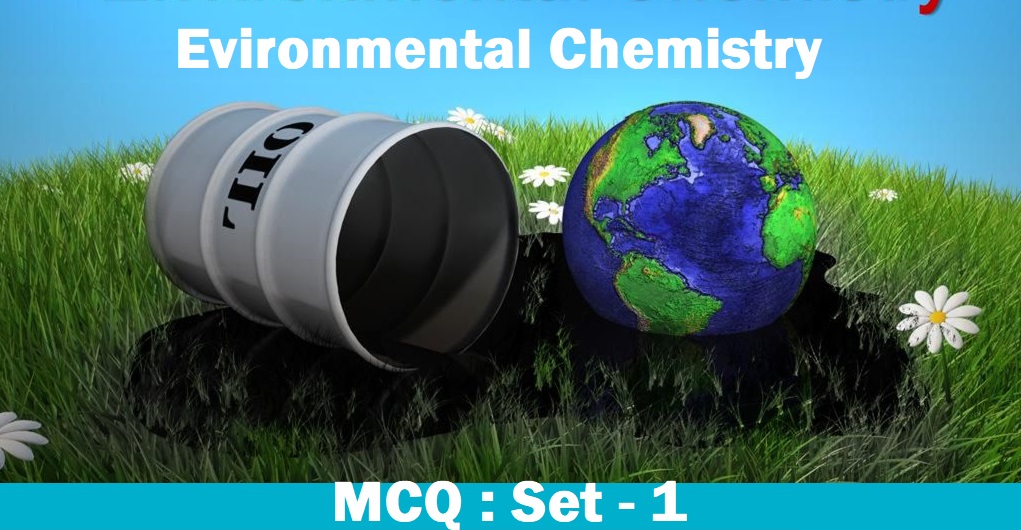CBSE Class 11 Chemistry Chapter 14 Environmental Chemistry Multiple Choice Questions with Answers. MCQ Questions Class 11 Chemistry Environmental Chemistry with Answers was Prepared Based on Latest Exam Pattern. Students can solve NCERT Class 11 Chemistry Environmental Chemistry MCQs with Answers to know their preparation level.
Students who are searching for NCERT MCQ Questions for Class 11 Chemistry Environmental Chemistry with Answers are compiled here to get good practice on all fundamentals. Know your preparation level on MCQ Questions for Class 11 Chemistry with Answers. You can also verify your answers from our provided MCQ Class 11 Chemistry Environmental Chemistry with Answers. So, ace up your preparation with MCQ of Chapter 14 Chemistry Objective Questions.
MCQ Questions Class 11 Chemistry Environmental Chemistry with Answers - Set - 1
Question 1:
Question. Which one of the following is responsible for depletion of the ozone layer in the upper strata of the atmosphere?
(a) Polyhalogens
(b) Ferrocene
(c) Fullerenes
(d) Freons
Correct Answer – (D)
Question 2 :
Question. Which one of the following statements regarding photochemical smog is not correct?
(a) Carbon monoxide does not play any role in photochemical smog formation.
(b) Photochemical smog is an oxidising agent in character.
(c) Photochemical smog is formed through photochemical reaction involving solar energy.
(d) Photochemical smog does not cause irritation in eyes and throat.
Correct Answer – (D)
Question 3 :
Question. About 20 km above the earth, there is an ozone layer. Which one of the following statements about ozone and ozone layer is true?
(a) It is beneficial to us as it stops U.V. radiation.
(b) Conversion of O3 to O2 is an endothermic reaction.
(c) Ozone is a triatomic linear molecule.
(d) It is harmful as it stops useful radiation.
Correct Answer – (A)
Question 4 :
Question. Which of the following is not correct about carbon monoxide?
(a) It forms carboxyhaemoglobin.
(b) It reduces oxygen carrying ability of blood.
(c) The carboxyhaemoglobin (haemoglobin bound to CO) is less stable than oxyhaemoglobin.
(d) It is produced due to incomplete combustion.
Correct Answer – (C)
Question 5 :
Question. Which of the following is a sink for CO?
(a) Microorganisms present in the soil
(b) Oceans
(c) Plants
(d) Haemoglobin
Correct Answer – (A)
MCQ Questions Class 11 Chemistry Environmental Chemistry with Answers
Question 6 :
Question. Green chemistry means such reactions which
(a) are related to the depletion of ozone layer
(b) study the reactions in plants
(c) produce colour during reactions
(d) reduce the use and production of hazardous chemicals.
Correct Answer – (D)
Question 7 :
Question. Which one of the following statements is not true?
(a) Clean water would have a BOD value of 5 ppm.
(b) Fluoride deficiency in drinking water is harmful. Soluble fluoride is often used to bring its concentration upto 1 ppm.
(c) When the pH of rain water is higher than 6.5, it is called acid rain.
(d) Dissolved Oxygen (DO) in cold water can reach a concentration upto 10 ppm.
Correct Answer – (C)
Question 8 :
Question. Among the following, the one that is not a greenhouse gas is
(a) sulphur dioxide
(b) nitrous oxide
(c) methane
(d) ozone.
Correct Answer – (A)
Question 9 :
Question. Which one of the following is not a common component of photochemical smog?
(a) Ozone
(b) Acrolein
(c) Peroxyacetyl nitrate
(d) Chlorofluorocarbons
Correct Answer – (D)
Question 10 :
Question. Which oxide of nitrogen is not a common pollutant introduced into the atmosphere both due to natural and human activity?
(a) N2O5
(b) NO2
(c) N2O
(d) NO
Correct Answer – (A)
- NCERT Solutions Class 11 Chemistry Chapter 1 : Some Basic Concepts of Chemistry
- NCERT Solutions Class 11 Chemistry Chapter 2 : Structure Of The Atom
- NCERT Solutions Class 11 Chemistry Chapter 3 : Classification of Elements and Periodicity in Properties
- NCERT Solutions Class 11 Chemistry Chapter 4 : Chemical Bonding and Molecular Structure
- NCERT Solutions Class 11 Chemistry Chapter 5 : States of Matter
- NCERT Solutions Class 11 Chemistry Chapter 6 : Thermodynamics
- NCERT Solutions Class 11 Chemistry Chapter 7 : Equilibrium
- NCERT Solutions Class 11 Chemistry Chapter 8 : Redox Reactions
- NCERT Solutions Class 11 Chemistry Chapter 9 : Hydrogen
- NCERT Solutions Class 11 Chemistry Chapter 10 : The s-Block Elements
- NCERT Solutions Class 11 Chemistry Chapter 11 : The p-Block Elements
- NCERT Solutions Class 11 Chemistry Chapter 12 : Organic Chemistry: Some Basic Principles and Techniques
- NCERT Solutions Class 11 Chemistry Chapter 13 : Hydrocarbons
- NCERT Solutions Class 11 Chemistry Chapter 14 : Environmental Chemistry



